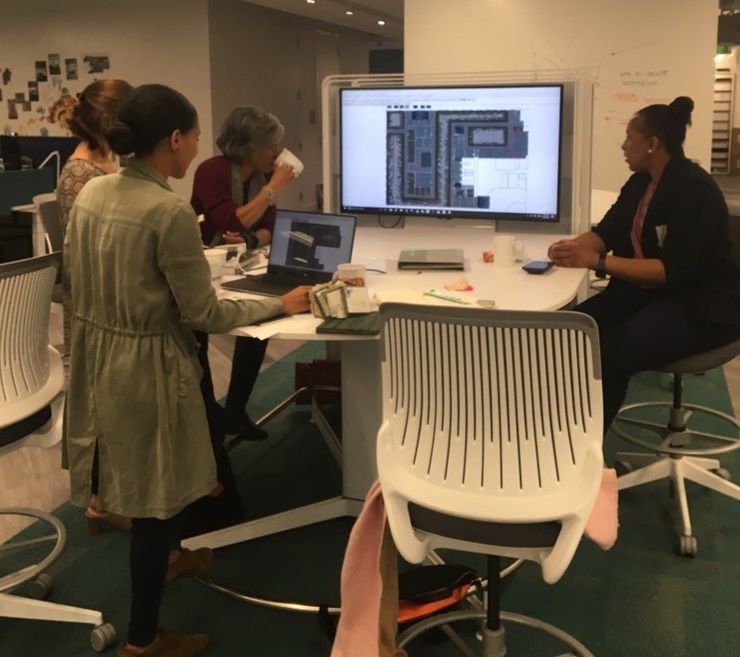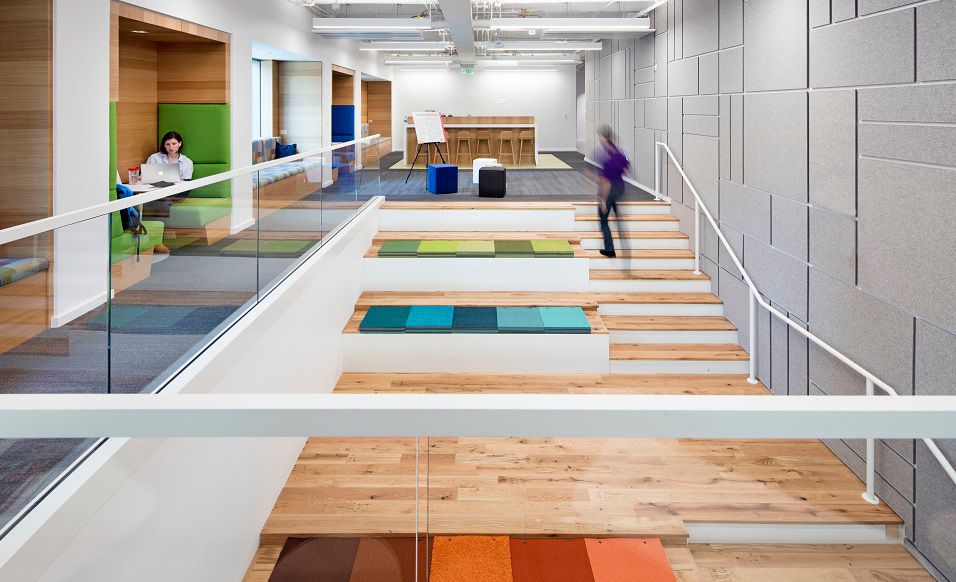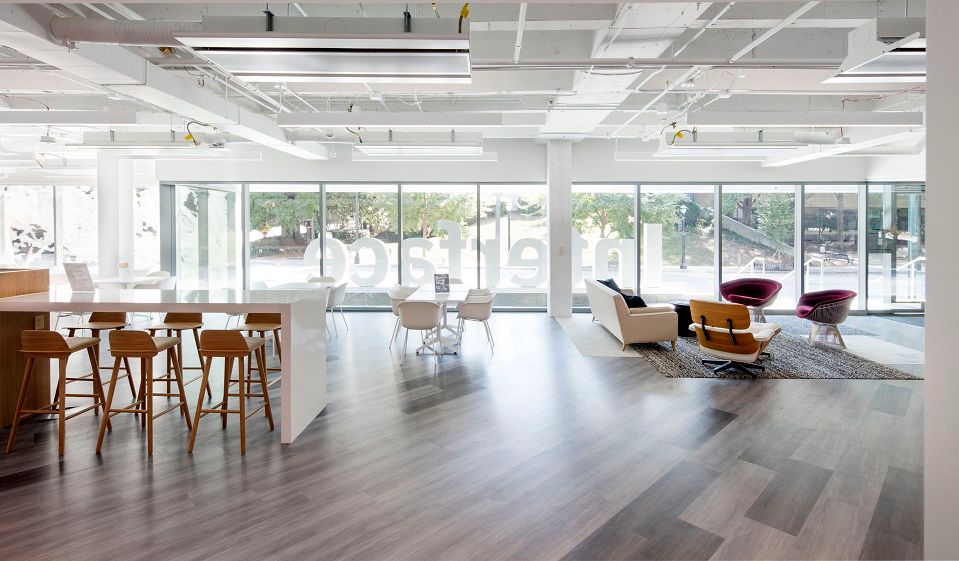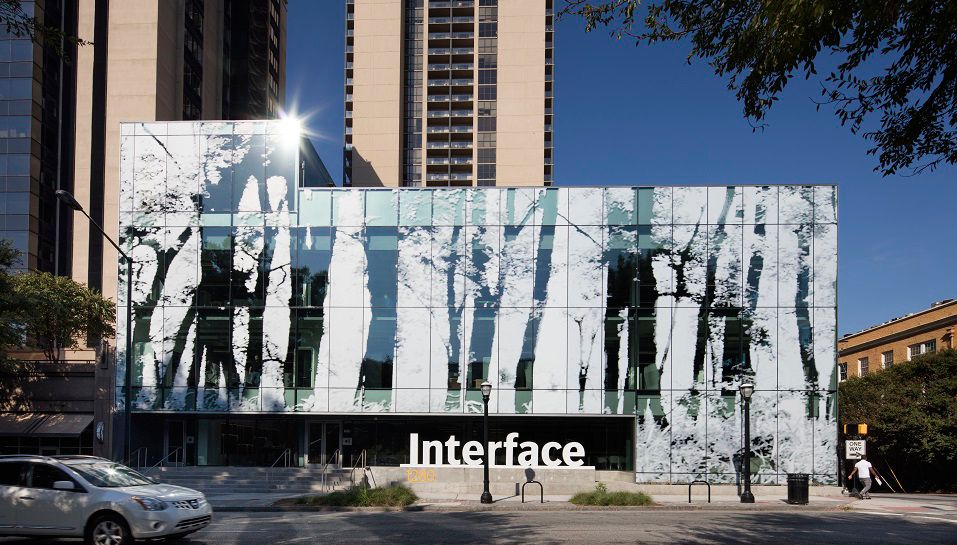When we began this journey to renovate what has since become Base Camp, one of the biggest questions we faced was how to create a collaborative and inspiring space for our designers. In continuation of our article series on the construction of Interface’s new global headquarters, today’s post features a behind-the-scenes look at the environment we designed to bolster creativity and cultivate positive spaces.
A living showroom
Design trends are ever-changing, and now, so is our Base Camp showroom. Designers occupy much of the first floor, which includes a large sample center located directly behind the stairway. They experience new products in the living space with flooring layout areas, making it easier than ever to create our next generation of innovative products.
When it comes to creativity, location matters
We immediately saw a need to lay aside old habits of locking ourselves in cubicles and closing doors for a more modern, fluid approach to Interface’s office culture. Our goal is to continuously push our designers’ creativity to the limits, and exposure to new people helps do that.
In our new work home, clients, designers and guests are naturally encouraged to collide with one another as they move through the building. Base Camp’s expansive staircase allows Interface team members to connect, collaborate and discover. The horizontal and vertical movement throughout the building is organized as a hiking trail, decentralizing and dispersing the traditional idea of a showroom – providing our designers and customers with a fresh view of our products and collections in action.
Similar to our unique projects, no two designers at Interface are alike. Base Camp offers different varieties of work settings to fit any creative mood employees finds themselves in. From quiet rooms, communal seating and traditional workstations to a rooftop lounge, work café and individual work pods, our designers can find inspiration in a variety of places without having to leave the building.
Bringing in biophilic design
Aside from offering wellness rooms and a library, we found one of the most important assets to a creative workplace is natural light. Studies show that creativity increases by 15 percent for designers who work in environments with natural elements, such as daylight and live plants. To achieve the perfect amount of light, a unique forest-inspired silicone film wraps around Base Camp’s all glass exterior, allowing ample natural light to illuminate every floor of the building.
The relationship between a built environment and innovative thinking can make or break our designers’ ability to tap into their heightened creativity. Light encourages cognitive processing and benefits mental health, making it an obvious feature to promote in our headquarters.
Outside in
True to our global design philosophy, we looked to nature for inspiration. Base Camp reflects who we are, what we do best and the values we live by every day. Biophilic design extracts qualities and features of natural settings without using exact duplicates and provides a sound and productive atmosphere for our designers to function at their optimal potential. To combat stress, urbanization and the increase of technology, we provided opportunity for our designers to connect with nature during the day. By outfitting Base Camp with materials, colors and repeating patterns such as fractals and curves, we created a sanctuary that stimulates a meaningful human experience.
We designed our new headquarters with the creative needs of our designers and design customers in mind. Next time you’re in Midtown Atlanta, we urge you to stop by and awaken your own creative genius at Base Camp.



